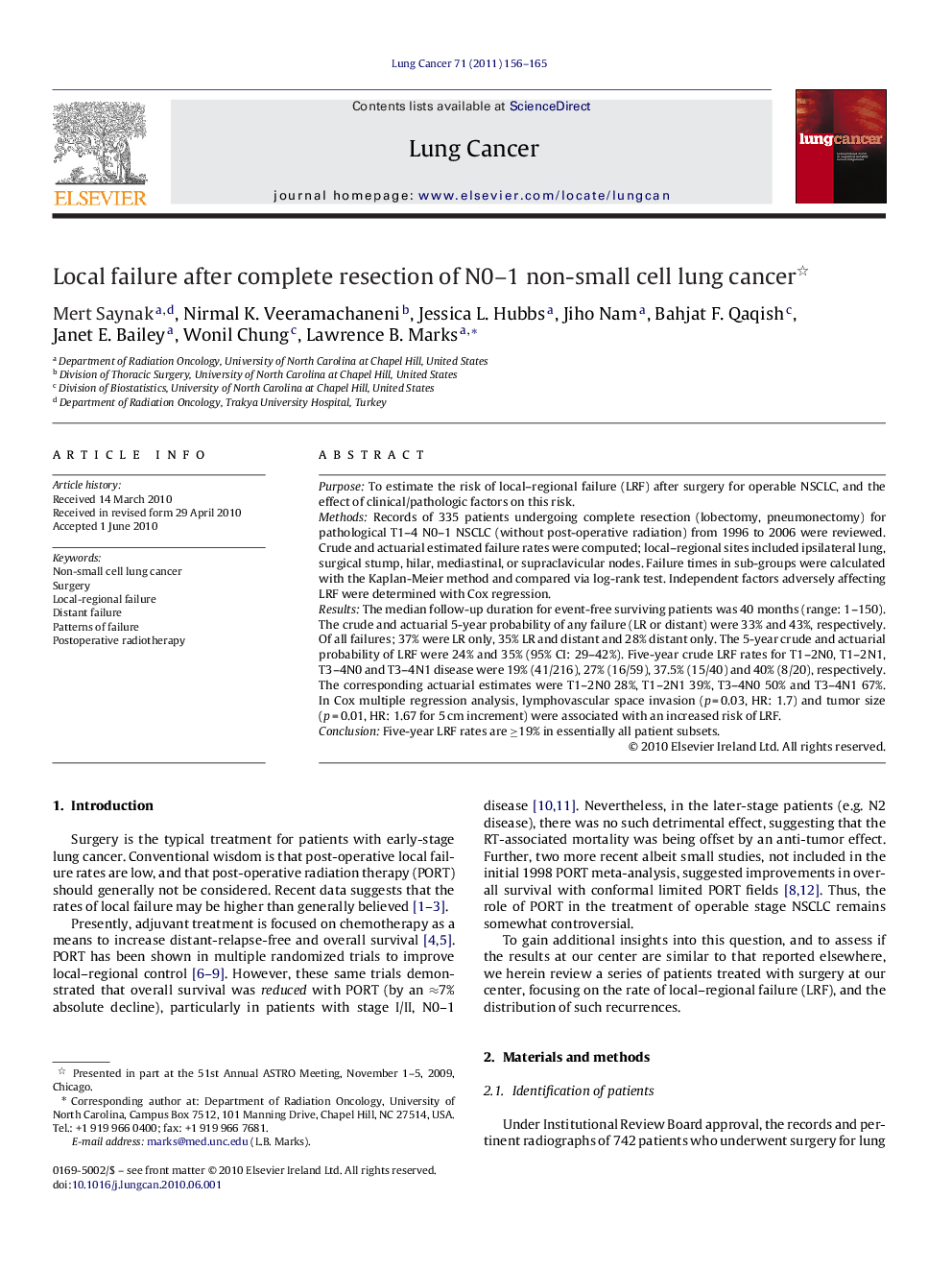| Article ID | Journal | Published Year | Pages | File Type |
|---|---|---|---|---|
| 2142123 | Lung Cancer | 2011 | 10 Pages |
PurposeTo estimate the risk of local–regional failure (LRF) after surgery for operable NSCLC, and the effect of clinical/pathologic factors on this risk.MethodsRecords of 335 patients undergoing complete resection (lobectomy, pneumonectomy) for pathological T1–4 N0–1 NSCLC (without post-operative radiation) from 1996 to 2006 were reviewed. Crude and actuarial estimated failure rates were computed; local–regional sites included ipsilateral lung, surgical stump, hilar, mediastinal, or supraclavicular nodes. Failure times in sub-groups were calculated with the Kaplan-Meier method and compared via log-rank test. Independent factors adversely affecting LRF were determined with Cox regression.ResultsThe median follow-up duration for event-free surviving patients was 40 months (range: 1–150). The crude and actuarial 5-year probability of any failure (LR or distant) were 33% and 43%, respectively. Of all failures; 37% were LR only, 35% LR and distant and 28% distant only. The 5-year crude and actuarial probability of LRF were 24% and 35% (95% CI: 29–42%). Five-year crude LRF rates for T1–2N0, T1–2N1, T3–4N0 and T3–4N1 disease were 19% (41/216), 27% (16/59), 37.5% (15/40) and 40% (8/20), respectively. The corresponding actuarial estimates were T1–2N0 28%, T1–2N1 39%, T3–4N0 50% and T3–4N1 67%. In Cox multiple regression analysis, lymphovascular space invasion (p = 0.03, HR: 1.7) and tumor size (p = 0.01, HR: 1.67 for 5 cm increment) were associated with an increased risk of LRF.ConclusionFive-year LRF rates are ≥19% in essentially all patient subsets.
